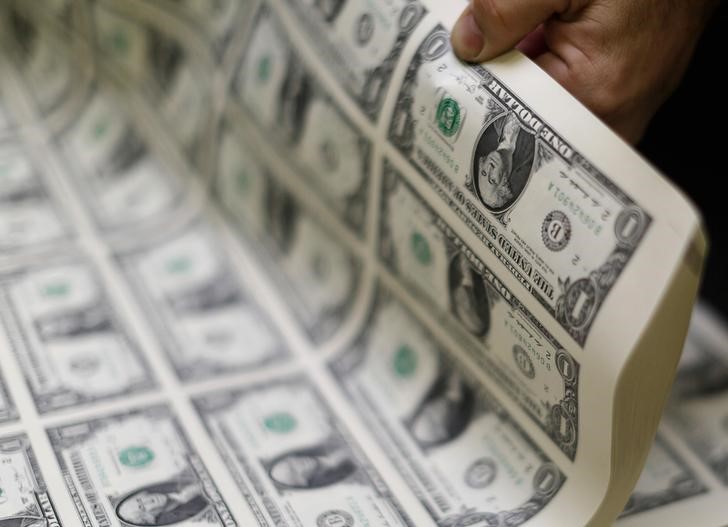Five things to watch in markets in the week ahead
Investing.com - The U.S. dollar rose Friday as Israel’s strikes on Iran represented a major escalation of conflict in the region, prompting a flight to the safe haven currency.
At 04:10 ET (08:10 GMT), the Dollar Index, which tracks the greenback against a basket of six other currencies, rose 0.3% to 98.209, but was still on track for a weekly decline of nearly 1%, its biggest drop in more than three weeks.
Dollar offers safe-haven appeal
The dollar climbed higher Friday after Israel launched a large‑scale airstrike on Iran, hitting “dozens” of military and nuclear targets, while a state of emergency was declared across Israel amid warnings of an imminent missile and drone counter‑strike from Tehran.
The attacks reignited concerns over risks to Middle East oil flows and global growth, which exacerbated the already fragile sentiment driven by global trade uncertainties.
“The Israeli strike on Iran’s nuclear facilities has sent oil prices spiking and has offered the oversold and undervalued dollar a catalyst for a rebound,” said analysts at ING, in a note.
Aside from the release of the University of Michigan sentiment index later in the session, there is little on the economic data slate to drive the dollar Friday.
With this in mind, traders will be keeping a wary eye on events in the Middle East, especially as Iran pledged a “harsh” retaliation against both Israel and the United States.
“What matters most for FX at this stage is the depth and length of the Middle East escalation’s impact on oil prices,” ING added. ”The key difference from previous Israel-Iran standoffs is that nuclear facilities have now been targeted, and while oil production does not seem to be affected just yet, markets have to add in a bigger risk premium given the crucial role of Iran in global oil supply.”
Euro, sterling head lower
In Europe, EUR/USD traded 0.3% lower to 1.1548, with the single currency reversing a four-day rally with traders deserting a currency perceived to be more risky to hold as oil prices surged.
“The euro generally dislikes geopolitical shocks leading to higher energy prices, and has therefore detached from JPY and CHF in early price action after the Israeli strike on Iran,” ING added.
Data has also shown that inflation should not be a reason for the European Central Bank to hold back on more interest rate cuts, as German inflation decreased to 2.1% in May, French inflation was just 0.7% and Spanish prices rose only 2.0%.
“We’ll likely need to wait for next week’s ECB speakers to get a better sense of what this all means for monetary policy,” ING added.
GBP/USD slipped 0.4% to 1.3562 as traders left sterling to the comfort of the safe-haven dollar.
The pound has also faced a raft of weak U.K. data on manufacturing activity, employment and economic growth this week.
Traders expect the Bank of England to deliver another quarter-point rate cut in September and another cut at some point by December, which would bring U.K. interest rates down to 3.75%, from 4.25% now.
“Cable has potentially a wide room for downside correction given how expensive it looks relative to rate differentials. But we have seen how structurally bearish USD bets are preventing dollar gains from being sustainable. So we’d be more cautious on that side,” ING said.
Aussie dollar hit hard
In Asia, USD/JPY traded 0.2% higher to 143.77, with the Japanese yen largely supported by its safe-haven status, while USD/CNY rose 0.1% to 7.1810.
AUD/USD slumped 0.7% to 0.6485, as the Israeli strikes led to a risk-averse mood with investors moving away from growth currencies, like the Aussie dollar, to towards safe haven assets like the U.S. dollar.
